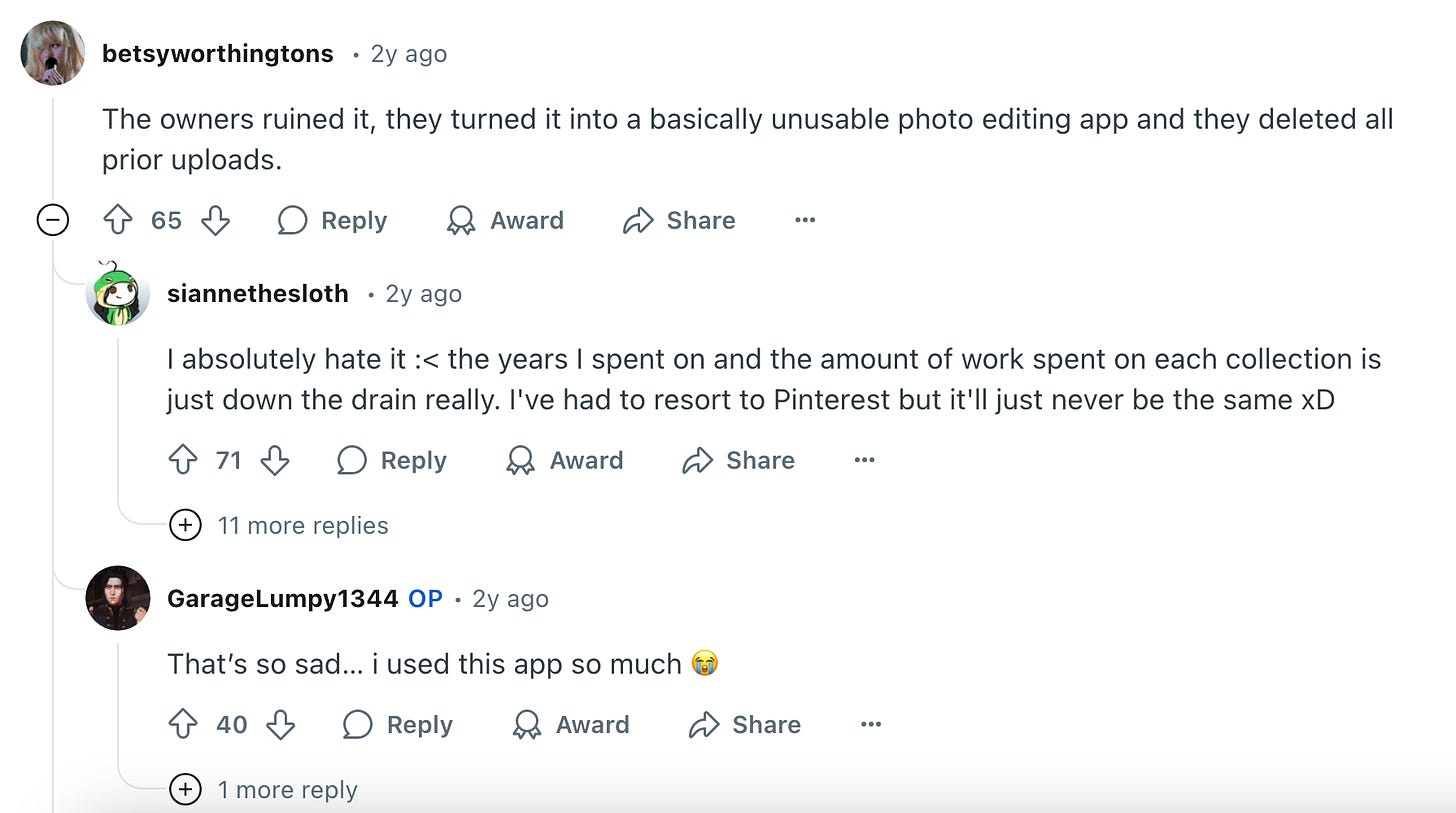


We often hear people say ‘Once it's on the internet, it's there forever’. This notion suggests that our digital footprints are indelible, preserved for eternity. But there is an important nuance there.
Sure your data is out there somewhere, whether you like it or not. But when it comes to keeping alive the content we willingly want to be and remain on the internet, we also do not get to decide.
To illustrate my point, let me tell you about WeHeartIt. It’s the perfect example that I will use to show the fragility of our online memories and the limited control we have over our digital content.
WeHeartIt: the digital scrapbook that has been scrapped
WeHeartIt emerged as a beloved platform for many in Generation Z, offering a space to share, curate, and draw inspiration from images and content. It gained popularity in 2013 on.
It was more than just a website, it was a community where users expressed their identities, aspirations, and creativity. Fandoms and aesthetics were super popular on that platform. The content on WeHeartIt went mostly hand in hand with the content on Tumblr.
Whether it was pastel grunge, Tumblr-era minimalism, or the soft glow of vintage filters, WeHeartIt was where teens meticulously pieced together who they wanted to be.
Then, one day, it was gone.
I mean, it was transformed into an editing app. And everyone’s content was deleted. This happened around 2023.

The platform's unexpected shutdown stripped users of their curated collections (there were even articles and podcasts at that point), underscoring the transient nature of digital platforms. I mean, videos have taken over so of course platforms with only pictures could not survive.
Users logged in to find their collections, their saved inspirations—entire archives of their younger selves—vanished. There was no warning, no way to recover lost content. The website had simply collapsed, taking with it years of personal and cultural history.
The digital erasure of teenagehood
For many, losing their WeHeartIt accounts wasn’t just about losing images—it was about losing a version of themselves.
Think about it: when you flip through an old diary or look at teenage photos, you see how much you’ve changed. Your tastes, your dreams, your aesthetic choices, all documented. But what happens when that record is erased?
The internet was the diary for many Gen Z teens. Unlike physical scrapbooks or photo albums, most of their memories existed only online. And now? Gone. The soft grunge Tumblr era, the One Direction fan edits, the early 2010s indie aesthetics—all those carefully curated identities are just… nowhere. (ok i’m exaggerating, you may find some on tumblr but not everyone who used weheartit was on tumblr and it’s just not the same)
Losing WeHeartIt is like having your childhood bedroom burned down with all your old journals inside. You can remember what it felt like, but you can’t go back somehow.

Are you in control of your digital memories?
I know that I sound like I’m being dramatic. But I really just took ONE example while mentioning WeHeartIt, I have countless websites and blogs and forums where I spent hours of my life sharing content that have disappeared.
Most online platforms operate under the illusion that you have control over your content. But in reality, companies do.
And when they decide it’s no longer profitable, your memories can be erased without warning.
This isn’t just about nostalgia. It’s about control—or rather, the lack of it.
So for me, the demise of WeHeartIt serves as a bitter reminder of the internet's impermanence. While the digital world was fun once, it’s clearly not the case anymore and we’re left grappling to have a climpse at the past.
Who knows, maybe in a few years someone will make a WeHeartIt-beta-wannabe version that would be like a simulation of the ‘old’ and ‘vintage’ internet for the new generations.
Thank you for reading (⁀ᗢ⁀)
Go watch my video essay on the topic :




